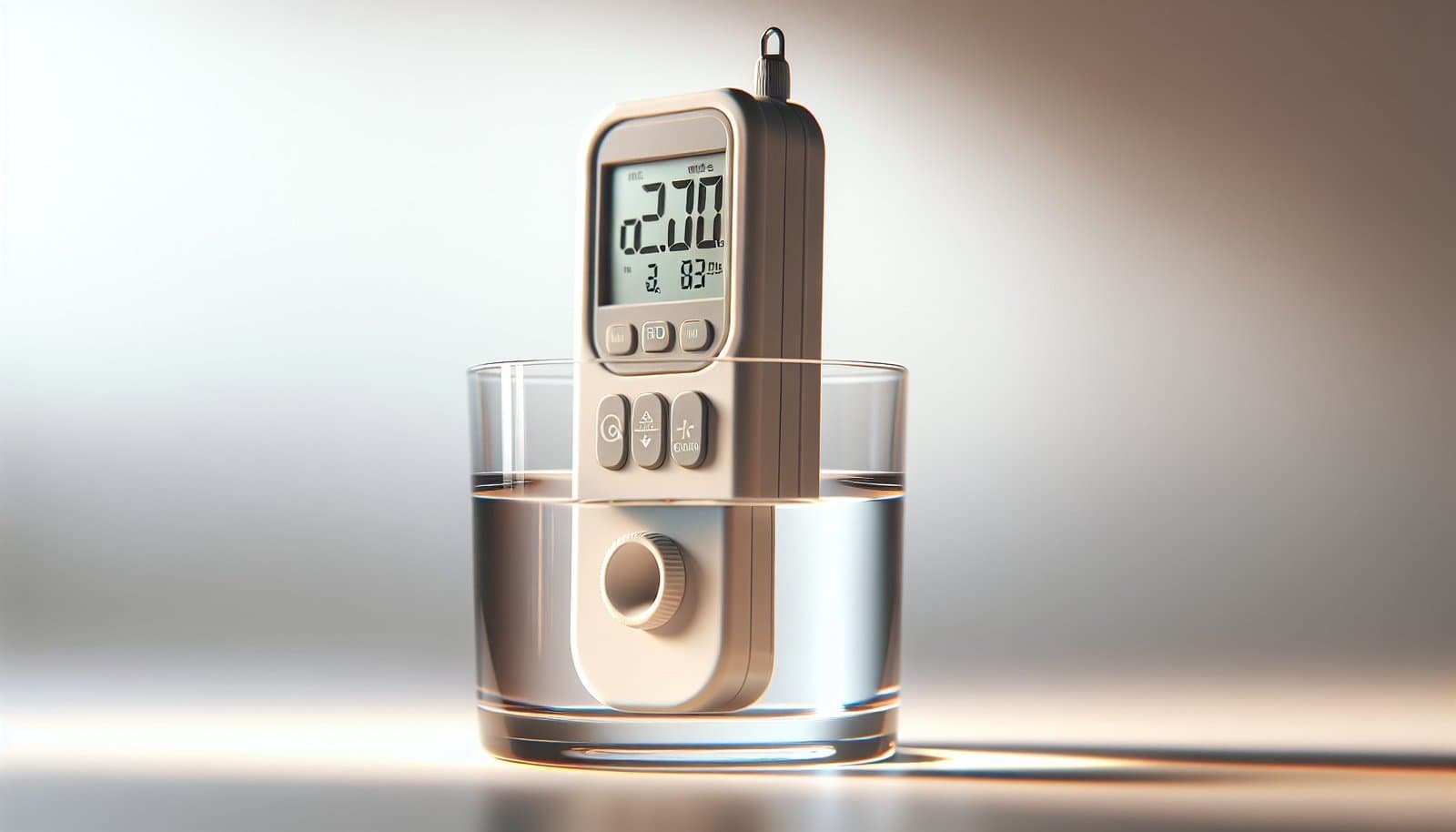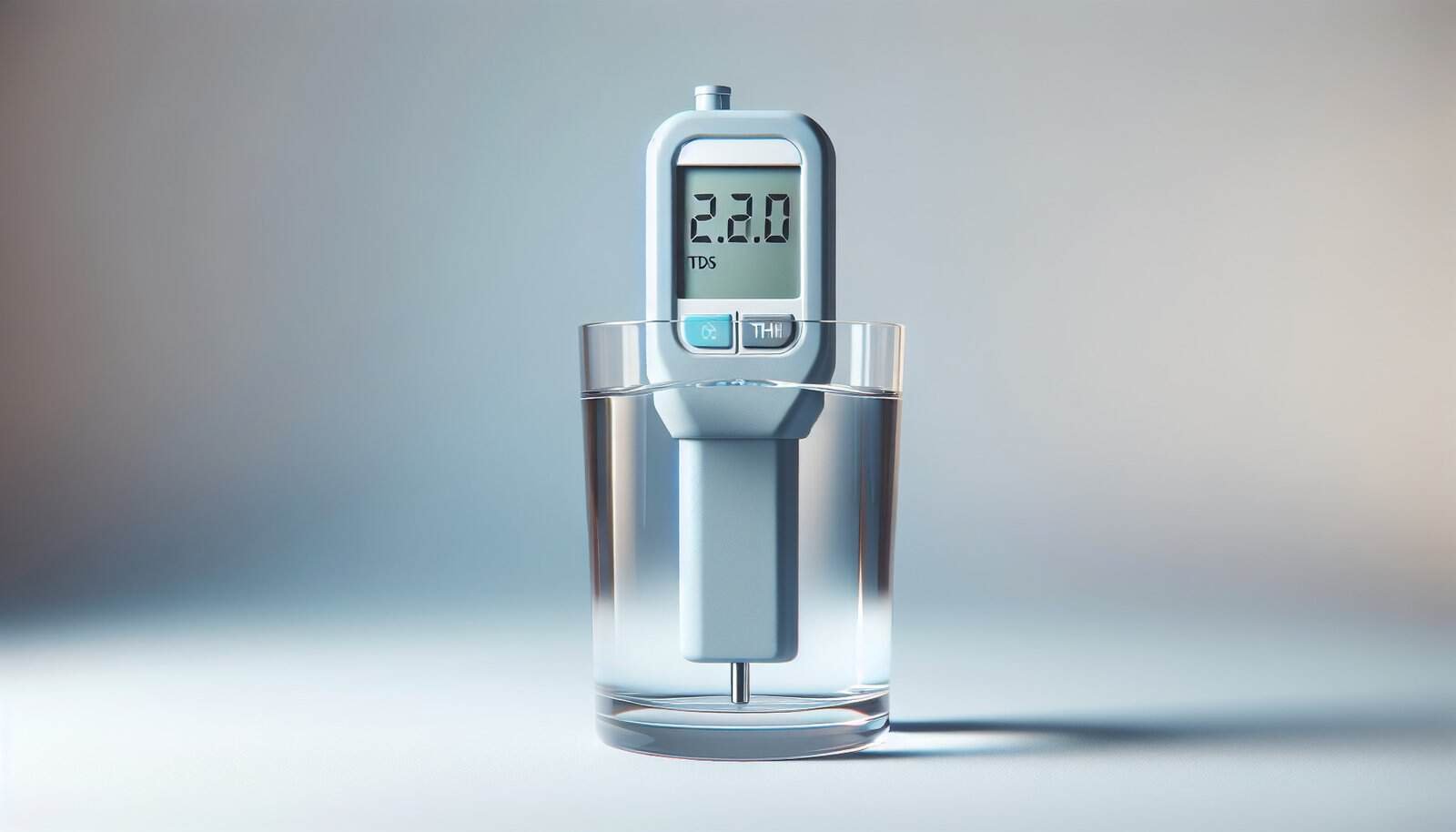?How can you keep reliable tabs on your water quality between formal laboratory tests so you catch problems early and respond quickly?
How Do I Monitor Water Quality Between Lab Tests?
You can establish an effective monitoring routine that uses portable tools, simple observations, and a plan for when to send samples to a lab. This article explains practical methods, tools, thresholds, and procedures so you can confidently track your water quality between formal analyses.
Why monitor between lab tests?
Regular monitoring helps you spot trends and sudden changes long before the next scheduled lab report arrives. You protect public health, equipment, livestock, aquaria, or ecosystems by detecting issues early and taking corrective action.

Establish a monitoring plan
A clear monitoring plan tells you what to measure, how often, and what actions to take if results are outside acceptable ranges. Creating a plan reduces guesswork and helps you prioritize resources for the most important parameters.
Identify key parameters
List the parameters that matter for your water use, such as pH, temperature, turbidity, conductivity/TDS, dissolved oxygen, disinfectant residual, ammonia, nitrate/nitrite, and microbiological indicators. Tailor the list to whether you manage drinking water, a private well, a pool, an aquarium, an industrial system, or a natural pond.
Set action thresholds and response
Decide in advance what measurement values trigger action — for example, immediate investigation, re-testing, or lab confirmation. Having predetermined action thresholds prevents delays and inconsistent responses when a problem appears.
Determine monitoring frequency
Frequency depends on risk, system stability, and regulations. A simple rule is: higher risk or greater variability = more frequent checks. The table below gives typical starting points you can adapt to your situation.
| Context | Recommended field-check frequency (starting point) |
|---|---|
| Municipal distribution systems | Daily to weekly for key residuals; weekly to monthly for others |
| Private wells (stable households) | Monthly to quarterly for basic parameters; after heavy rain or construction |
| Pools and spas | Daily for chlorine/pH; weekly for alkalinity and calcium hardness |
| Aquaria (home hobbyist) | Daily for ammonia/nitrite; weekly for nitrate, pH, and temperature |
| Ponds and small lakes | Weekly to monthly in warm season; monthly in cold season |
| Cooling towers / industrial systems | Daily to weekly for conductivity and biocide residuals |
| Construction sites / disturbed areas | After precipitation events and weekly during active work |
Adjust these frequencies based on your past data, seasonal changes, and any unusual events.
Field and portable testing tools
You can use a range of portable tools that provide rapid, on-site results. Each tool has strengths and limitations, so choose those that match your monitoring goals and budget.
Test strips
Test strips are simple, fast, and inexpensive for parameters like pH, chlorine, nitrate, and some hardness indicators. They are great for screening but tend to be less precise and can be affected by user interpretation and storage conditions.
Portable meters (pH, conductivity, DO, temperature)
Handheld meters offer better accuracy than strips and give continuous readings for pH, conductivity/TDS, dissolved oxygen (DO), and temperature. Regular calibration and proper probe care are essential to maintain accuracy.
Colorimeters and photometers
Colorimeters quantify reagents that change color in proportion to parameter concentration (e.g., iron, phosphate, chlorine, nitrate). They provide more accurate field readings than strips but require reagents and careful technique.
Turbidimeters
Turbidity meters measure suspended particles using nephelometric methods and are useful for drinking water, process control, and environmental monitoring. Portable models range from basic to highly accurate.
TDS meters and conductivity meters
TDS meters estimate total dissolved solids using conductivity and are handy for general water quality checks (e.g., detecting salt intrusion). They provide quick, useful trends but are not substitutes for full ion analysis.
Field bacteriological kits
Presence/absence (P/A) tests and portable culture kits let you screen for total coliforms or E. coli on-site within 24–48 hours. They are useful for decision-making between lab tests but can give false negatives if sample handling is poor.
ATP meters (bioluminescence)
ATP (adenosine triphosphate) meters detect biological activity by measuring light emitted from ATP reactions. They are fast and useful for biofilm and sanitation checks, but they don’t identify specific organisms.
Online sensors and telemetry
For continuous monitoring, install online sensors for parameters like pH, conductivity, ORP, chlorine, turbidity, and DO. Telemetry and alarms let you react immediately when trends cross thresholds, which is invaluable for high-risk systems.
Pros and cons of common portable tools
| Tool | Pros | Cons |
|---|---|---|
| Test strips | Cheap, fast, easy | Low precision, subjective color reading |
| pH/conductivity meters | Accurate, immediate | Need calibration, probe care |
| Colorimeter | Quantitative, parameter-specific | Reagents needed, per-test cost |
| Turbidimeter | Objective turbidity values | Higher cost, requires calibration |
| TDS meter | Quick trend indicator | Not specific to contaminants |
| Field bacterial kits | On-site microbial screening | Time to result, handling sensitivity |
| ATP meter | Rapid bioactivity check | No organism ID, costly consumables |
| Online sensors | Continuous data, alarmable | Installation cost, maintenance |

Biological monitoring between lab tests
Monitoring biological quality is often the most time-sensitive because pathogens can affect health quickly. You can use screening tests and environmental observations to stay ahead of risks.
Presence/absence kits for bacteria
P/A kits let you know if indicator bacteria like coliforms are present in 100 mL samples. Use them as a screening tool: a positive result should prompt immediate action and a laboratory confirmation sample.
ATP testing for sanitation and biofilm
ATP tests are useful for assessing cleanliness of surfaces and water systems; high ATP suggests organic matter or living organisms that can support bacterial growth. They’re popular in food and water system maintenance programs for rapid checks.
Microscopy and simple staining
If you have access to a microscope, simple staining and microscopic checks can reveal algae, protozoa, or large particulates in natural waters. Microscopy can be a low-cost complement to other methods for recurring problems like algal blooms.
Biological indicators in natural waters
Macroinvertebrate surveys and algal community observations are practical for assessing ecological changes over longer time scales. If you notice shifts in species, abundance, or presence of nuisance algae, it may signal a water quality problem that needs lab investigation.
Visual and sensory checks
Your eyes and nose are valuable field tools for immediate detection of problems that require further testing or urgent action. Regular visual checks help you detect spills, oils, discoloration, foams, or dead organisms.
What to look for
Look for sudden changes: brown or colored water, oily sheen, scum, excessive foam, dead fish, or strong odors (chlorine, rotten egg for hydrogen sulfide). These signs often point to contamination events, algal blooms, or system failures.
Recording observations
Record what you see, when, and where, plus environmental conditions like recent rainfall or upstream activities. Photographs with timestamps are extremely useful when explaining events to a lab, regulator, or contractor.

Sampling best practices for reliable in-field results
Good sampling technique is crucial for reliable field results and for deciding when to send samples to a lab. Poor sampling yields misleading data and can waste effort.
Grab vs composite samples
Grab samples are single, discrete samples taken at a point in time and are ideal for immediate, event-specific checks. Composite samples combine multiple grabs over time or depth and are better for assessing average conditions over a period.
Sample collection and handling
Use clean, appropriate containers and follow sterile technique for microbiological samples. Label immediately, keep samples cool and dark if required, and test or dispatch to lab within holding time limits.
Avoiding cross-contamination
Rinse bottles and probes properly and use gloves when handling samples to avoid contamination. For microbiological samples, use sterile containers and avoid touching inner surfaces or lids.
Field blanks and duplicates
Use field blanks (clean water treated as a sample) and duplicate samples occasionally to check for contamination and reproducibility. These quality checks help you know when field results are trustworthy.
Data logging, trend analysis, and quality control
Collecting data is only useful if you organize it and look for trends; that’s how small changes become actionable intelligence. Implement simple quality control practices to ensure the data you rely on is valid.
Maintain a logbook or database
Keep a consistent log that records date, time, location, parameter values, instrument ID, calibration info, and any observations. Digital logs and spreadsheets make trend visualization easier and allow you to set automated alerts.
Use control charts and baselines
Plot baseline results and use control charts to detect gradual shifts or spikes outside expected variation. Establishing normal ranges based on historical data reduces false alarms and improves confidence in your decisions.
Calibration and maintenance records
Document all instrument calibration, probe replacements, reagent lot numbers, and maintenance. Regular calibration against standards is essential to ensure measurements are accurate over time.

Interpreting results and acting on them
Making sense of field measurements requires context: what’s normal for your system, the precision of your tool, and whether a lab confirmation is needed. Use your predefined action thresholds to guide responses.
Typical parameter guidance (examples)
Below are general reference values for common contexts. These are starting points and not substitutes for local regulatory standards or lab confirmation.
| Parameter | Typical safe range for drinking water* | Notes |
|---|---|---|
| pH | 6.5–8.5 | Affects taste, corrosion, disinfection efficacy |
| Turbidity | <1 ntu (desirable)< />d> | >5 NTU often triggers investigation |
| Total coliforms | 0 CFU/100 mL | Any confirmed coliform requires action |
| E. coli | 0 CFU/100 mL | Any detection indicates recent fecal contamination |
| Nitrate (NO3 as N) | <10 mg /> | Higher values are risky for infants |
| Free chlorine (distribution) | 0.2–0.5 mg/L residual typical | Pools require higher residuals |
| TDS | <500 mg /> (secondary guidance) | High TDS affects taste and processes |
*Local regulations may differ; check your authority for legal limits.
Deciding when to act vs retest
If a portable test shows a small deviation but looks like a trend, increase monitoring frequency and retest to confirm. If you see a significant exceedance, positive microbial screen, or acute event (chemical odor, fish kill), take immediate protective actions (boil water notices, isolation of system) and arrange for laboratory confirmation.
When to send a lab sample
Field methods are excellent for screening and rapid response, but labs provide certified, precise results and species-level identification when needed. Send lab samples when regulatory compliance, public health, legal issues, or precise quantification are required.
Triggers for lab submission
Send samples if:
- Any microbial screening returns positive.
- A parameter exceeds your action threshold and potential health risk is present.
- You need legal or regulatory documentation.
- You can’t identify the cause of a sudden change using field tools.
- You need a full suite analysis (heavy metals, specific organics, or species ID).
Preparing samples for the lab
Follow the lab’s instructions precisely for containers, preservatives, holding times, and chain-of-custody. Proper sample preservation (e.g., cooling, acidification) and timely delivery are crucial for accurate lab results.

Case studies and examples
Real-world scenarios can help you apply these principles to your situation and make better decisions faster. Here are practical examples you can relate to and adapt.
Private well after heavy rain
You notice cloudy water after a storm. You test turbidity and a presence/absence coliform kit; both are elevated. You stop using the water for drinking, boil water or use bottled water, then send a lab sample for coliforms and nitrate to confirm and identify the contamination source.
Pool operator managing chlorine and pH
Daily free chlorine and pH checks using a colorimeter or test strips keep the pool safe and comfortable. If chlorine drops suddenly or pH drifts, you check for organic load, adjust the disinfectant feed, and backwash filters if needed.
Aquarist managing ammonia spikes
Your fish act stressed and test strips show rising ammonia. You perform a partial water change, reduce feeding, add biological filter media, and monitor ammonia and nitrite daily until levels stabilize.
Facility with online sensors
A small treatment plant installs online turbidity and chlorine sensors with telemetry. An alarm triggers when turbidity spikes after a storm, and staff isolate the intake, switch to an alternate source, and send samples for lab analysis.
Budgeting and choosing equipment
Choose equipment based on required precision, frequency of testing, and available budget. Plan for recurring consumables, calibration solutions, and replacement probes.
Cost considerations
- Test strips: very low per-test cost, but lower accuracy.
- Handheld meters and colorimeters: moderate one-time cost, recurring reagents.
- ATP meters and online sensors: higher upfront and maintenance costs.
- Lab analyses: per-sample cost varies widely; plan for occasional confirmations.
Buying tips
Buy meters from reputable manufacturers and consider service agreements for sensors. Ensure availability of reagents and spare probes, and choose models with user-friendly calibration routines.
Limitations of field monitoring
Field tools are powerful for screening and trend detection, but they have limitations in precision, selectivity, and regulatory acceptance. Understand these limits so you don’t over-rely on a single measurement.
Common limitations
- Some field methods cannot detect trace contaminants (e.g., low-level lead or organic micropollutants).
- Interferences in the water matrix can affect colorimetric tests and strips.
- Microbial kits can produce false negatives if sample handling is poor.
- Online sensors require regular maintenance and calibration.
Quality assurance and validation
Maintain confidence in your results by performing routine quality assurance (QA) checks such as calibration, blanks, duplicates, and periodic lab confirmations. A small QA program prevents bad data from driving poor decisions.
Implement simple QA practices
Calibrate meters daily or according to manufacturer recommendations, use standards to verify colorimeters, and send split samples to a lab periodically to compare results. Keep documentation so you can trace problems and demonstrate diligence.
Creating an action plan for common exceedances
Prepare clear, step-by-step responses for likely issues so you react quickly and consistently. An action plan reduces panic and ensures public safety and regulatory compliance.
Example action steps
- Elevated turbidity: Stop water use for sensitive purposes, increase monitoring, flush and clean filters, and send sample for lab turbidity and microbial analysis.
- Positive coliform screen: Issue boil water advisory or use bottled water, resample for confirmation at a lab, inspect wellhead or distribution for contamination.
- Chlorine drop in distribution: Check feed equipment, increase chlorine dosing if safe, inspect for organic loading, and increase sampling frequency.
Training and human factors
Even the best equipment relies on competent operators. Train staff or household members on sampling technique, instrument use, basic troubleshooting, and when to escalate to experts.
Building capacity
Create simple checklists and quick reference guides for daily checks, calibrations, and emergency responses. Regular refreshers and practice increase confidence and reduce errors.
Legal and reporting considerations
Know your local reporting requirements, especially for drinking water systems or industrial discharges. Some exceedances must be reported to regulators within specific timeframes.
What you should do
Keep a record of your monitoring and any actions taken and submit required reports if rules apply to your system. When in doubt, contact your local health or environmental agency for guidance.
Conclusion and quick checklist
Monitoring between lab tests keeps you informed and ready to act when water quality changes. By combining regular observations, portable tools, data logging, and clear action thresholds, you protect health, processes, and systems.
Quick checklist to start monitoring between lab tests:
- Define the purpose and key parameters for monitoring.
- Establish baseline values and action thresholds.
- Choose appropriate field tools and set a calibration schedule.
- Create a sampling and data-logging routine.
- Train the people who will collect and interpret data.
- Use visual observations and simple tests daily if needed.
- Send samples to a certified lab when results exceed thresholds or when confirmation is required.
- Keep records and review data regularly to spot trends.
If you’d like, I can help you build a tailored monitoring plan for your specific water system, recommend specific meters or kits for your budget, or create a simple spreadsheet template to log and visualize your results.
